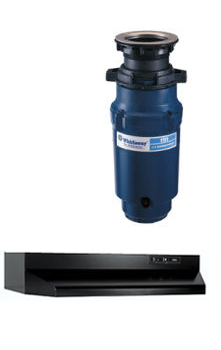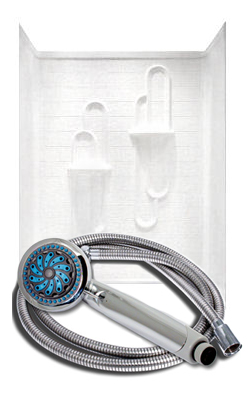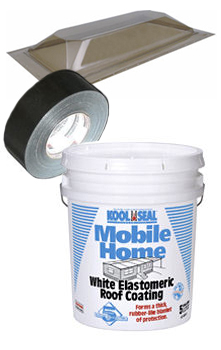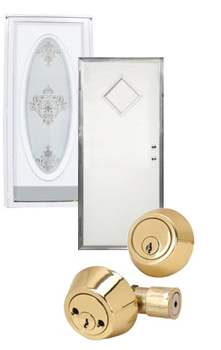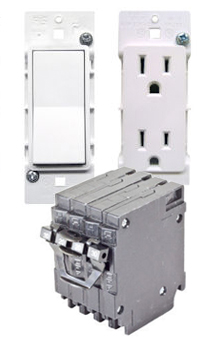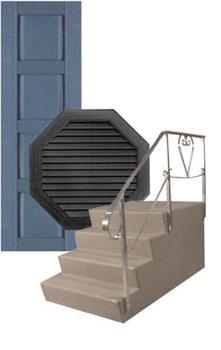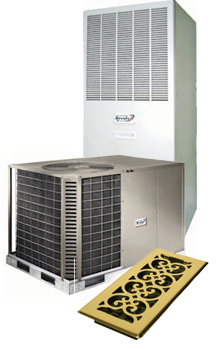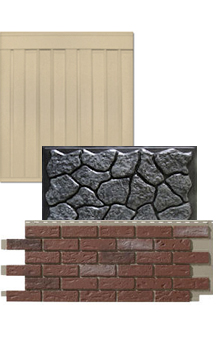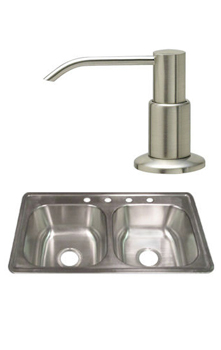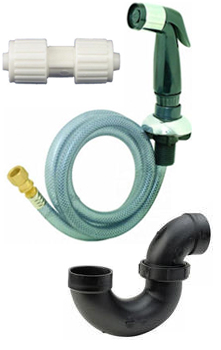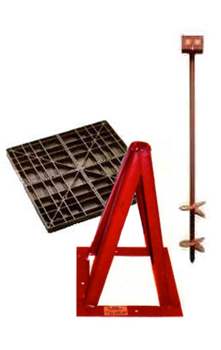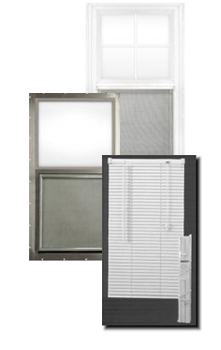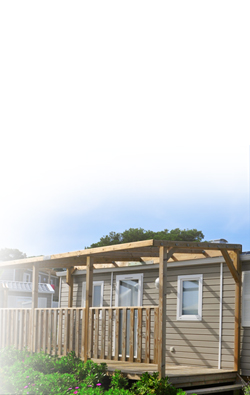
Spring is in the air, and for mobile homeowners, it’s the perfect time to ensure your home’s roof is in top-notch condition. With the warmer weather and longer days ahead, taking care of your mobile home’s roof now can save you headaches and expenses down the road. This article shares tips for:
- Check the condition of your roof.
- Learn about common maintenance and repair tasks.
- Decide if you can do some tasks yourself.
- Know when it’s best to hire a professional
Why Spring is the Best Time for Roof Maintenance
Spring is the perfect time to take care of your roof. After the winter storms have passed, it’s easier to spot any damage to your roof, shingles, gutters, or drainage system. By inspecting your roof in the spring, you can fix any new damage before it gets worse under the summer sun or becomes a breeding ground for algae and mildew due to moisture problems. Plus, keeping up with roof maintenance can also enhance energy efficiency by preventing air leaks and reducing the strain on your heating and cooling systems as the weather warms up.
Types of Mobile Home Roofs
Knowing what kind of roof you have can make a big difference in its maintenance and repairs. There are two main types of mobile home roofs: flat or pitched.
- Flat Roofs: These are common in older mobile homes built before June 1976. They have a flat or slightly bowed slope. They’re easier to install but can develop water pooling issues without proper maintenance.
- Pitched Roofs: These roofs have a steeper slope and are more common in newer mobile homes. They’re better at letting water run off, which means they’re less likely to be damaged by water.
But what about roof maintenance, and how does the slope of your roof affect what type of maintenance you will encounter?
Tips for Keeping Your Mobile Home Roof in Good Shape
Taking care of your mobile home roof isn’t just about comfort——it’s also about prolonging the life of your roof and avoiding expensive repairs down the road.
Here are some important tips to help you out:
1. Inspect Your Mobile Home’s Roof
Spring cleaning often means tackling home maintenance tasks, and your roof shouldn’t be overlooked. While major repairs should be left to professionals, there are simple steps homeowners can take to keep their roofs in good shape.
Kick off your spring roof care routine with a careful inspection. Keep an eye out for:
- Missing or damaged shingles
- Shingles that are curling or buckling
- Cracks in sealant around vents, chimneys, or skylights
- Water stains on your ceilings or walls
If you notice any issues during your inspection, fix them immediately to prevent further damage and extend the life of your roof.
2. Clear Away Any Leftover Debris
Even if you’ve thoroughly cleaned up after fall, winter can still leave debris on your roof, especially if lots of trees surround you. At the same time, sticks and leaves might not seem like a big deal, but leaving them too long can lead to the growth of algae and moss. This can seriously harm your roof’s shingles and shorten their lifespan.
Plus, sticks can cause direct damage to your roof, so this may be a chance to find previously overlooked areas of damage. While tidying up, keep an eye out for any plants starting to grow on your roof, as their roots can harm your waterproof layer.
3. Trim Overhanging Trees and Plants
Is your roof constantly covered in leaves and debris? It might be because of overhanging branches from nearby trees and bushes. But it’s not just a messy problem – those branches can break and land on your roof during heavy rain, causing scratches or even punctures. Plus, the leaves and debris can block your drains and gutters, leading to potential water damage.
To avoid these headaches, make sure to trim those branches regularly and keep a safe distance from your roof.
4. Keep Your Gutters Clean

As spring rain approaches, it’s crucial to make sure your gutters are working well and not clogged with leaves and other debris. This means it’s time for gutter cleaning! Spend some time clearing out any leaves, twigs, or other clutter from your gutters and downspouts. This simple job can prevent more significant problems like water pooling and damage to your home’s structure. You might even consider adding a gutter guard to stop more blockages in the future.
5. How to Maintain Your Flashings and Sealants
Your roof’s flashings are crucial for keeping water away from tricky spots like vents, chimneys, and skylights. These metal strips shield the edges of your roof.
Over time, they can wear out or loosen, allowing water to sneak in through the roof. It’s essential to inspect your flashings and promptly address any issues. If you spot any that are damaged or missing, be sure to replace them and protect the edges with a water-tight sealant.
6. Protect Your Mobile Home with Coatings and Sealants
When it comes to protecting your mobile home roof, coatings and sealants are your best friends. They come in a wide variety, each serving a distinct purpose and tailored for different needs. While some coatings and sealants work well with certain materials, they offer the same level of protection on others.
Mobile Home Roof Coatings
Coatings add a layer of defense to your mobile home roof, shielding it from the elements and prolonging its life. They act like a shield against UV rays, harsh weather, and everyday wear and tear. Plus, they help save energy by reflecting sunlight and reducing heat.
How often you apply a roof coating depends on your roof type, home condition, and location. Here are two common types to consider:
Elastomeric Roof Coatings
Elastomeric roof coatings are an excellent choice for mobile homes because they’re flexible and strong. Available in acrylic, latex, urethane, and silicone forms, coatings like Kool Seal® can expand and contract with temperature changes, keeping your home safe from leaks and weather damage.
Choose your coating based on your roof material and local climate. For instance, white latex roof coating is excellent for mobile homes in warmer regions because of its reflective properties.
Asphalt Aluminum Coating for Mobile Home Roofs
Another popular option for mobile home roofs is asphalt aluminum coating. Made mostly from asphalt and aluminum particles, it adheres well to almost any surface. However, it tends to attract dust, which slightly reduces its reflectivity.
But don’t let that deter you! Asphalt aluminum coatings still offer significant benefits for your home. Once applied, they protect within 24 hours and can lower your roof’s temperature by up to 60 degrees.
Mobile Home Roof Sealants
The difference between roof sealant and coatings is that coatings are designed to protect against rain, sunlight, and other weather conditions by bonding with the roof’s surface. On the other hand, a sealant is more similar to a “roof caulk,” creating a barrier against moisture. Sealants are particularly effective around openings, preventing leaks and protecting your home from water damage.
Sealants come in two main types:
- Solvent-based sealants are highly resistant to various weather conditions but can be more expensive and challenging to apply. When using them, wear a protective mask to avoid inhaling fumes.
- Water-Based Sealants: While less resilient than solvent-based ones, water-based sealants are more affordable and easier to work with. Just be prepared to do some maintenance every few years to keep them effective.
Patching Your Mobile Home Roof
Even if you keep an eye on your roof, leaks can sneak up on you due to materials, bad weather, or accidents. However, if you find a leak in your mobile home’s roof, it’s important to patch it immediately.
The goal of a patch is to create a slightly raised area to stop water from gathering. It should let water drain off quickly on all sides, but it needs to be level with the rest of the roof. This might mean cutting out a small section to add insulation or putting plywood to make a gentle slope.
Here are two simple ways to patch up your roof:
Black Mastic
One of the easiest and most affordable methods is using black mastic tape and cap kits. Black mastic is a sticky, tar-like substance used to seal small cracks and holes. You can buy a complete kit that includes the mastic, fabric webbing, and an asphalt-aluminum coating. Together, they form a budget-friendly system for patching your mobile home roof.
Butyl Rubber and Galvanized Steel Patch
For bigger holes or damaged sections, try butyl rubber and galvanized steel patches. Start by applying mastic under the galvanized steel patch, then screw it onto the roof over the damaged spot, making sure the screws hit the trusses for stability. After that, put foil-faced sticky butyl rubber over the patch, extending it past the edges. Butyl rubber is strong and can effectively fix larger areas of damage on your roof.
Keep Your Mobile Home Roof in Shape this Spring

Taking care of your mobile home roof is crucial to keeping your home in great shape. Regular inspections, cleaning, and fixing any issues early on can help your roof stay strong and protect your home from the weather. Safety is key, so if you’re not sure how to do something, it’s best to ask a professional.
When it comes to maintaining and repairing your mobile home’s roof, having the right products and materials is essential. At Mobile Home Parts Store, we offer parts and supplies specifically designed for mobile homes. From roof coatings and sealants to replacement shingles and flashings, we have everything you need to keep your mobile home’s roof in tip-top shape.
Tags: mobile home, mobile home roof, Mobile Home Roof Coating, mobile home roof repair, roof, Roof Coating


